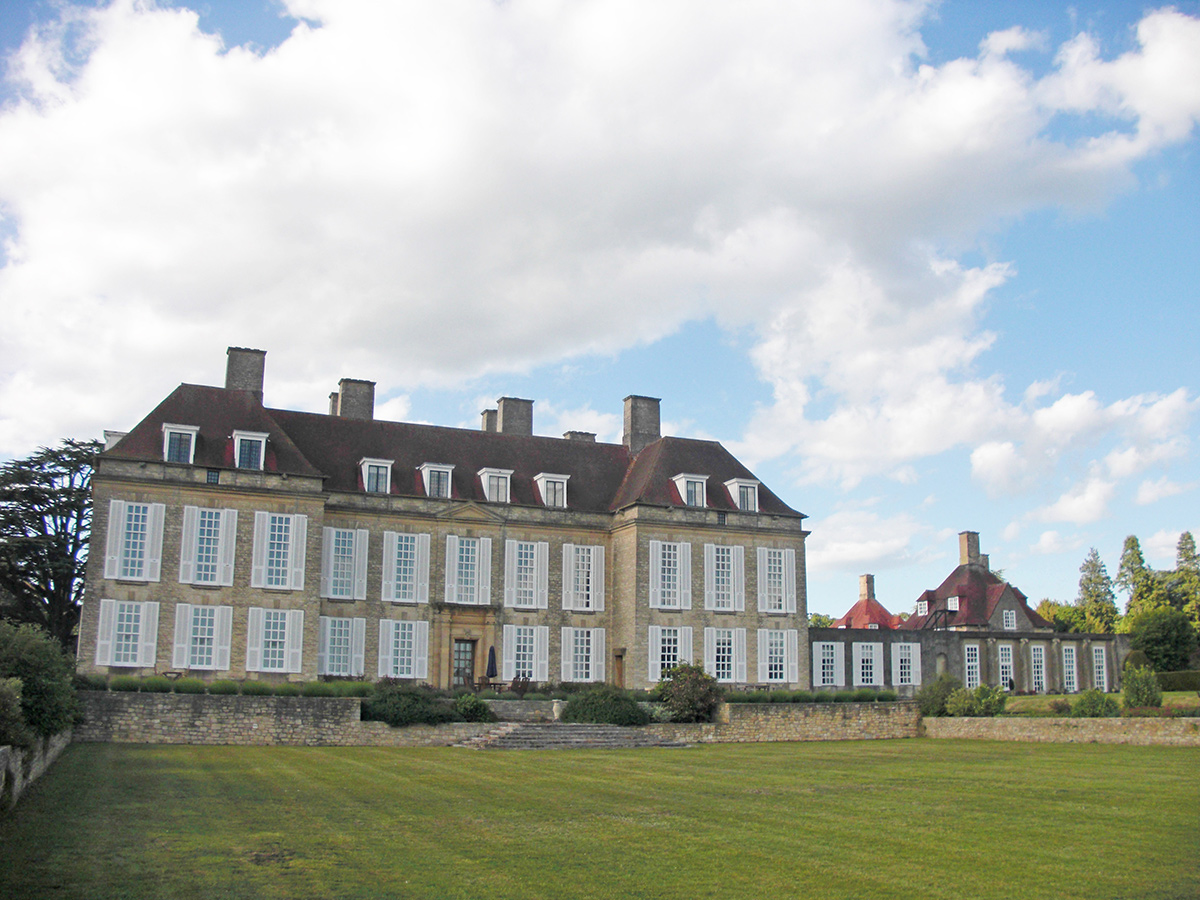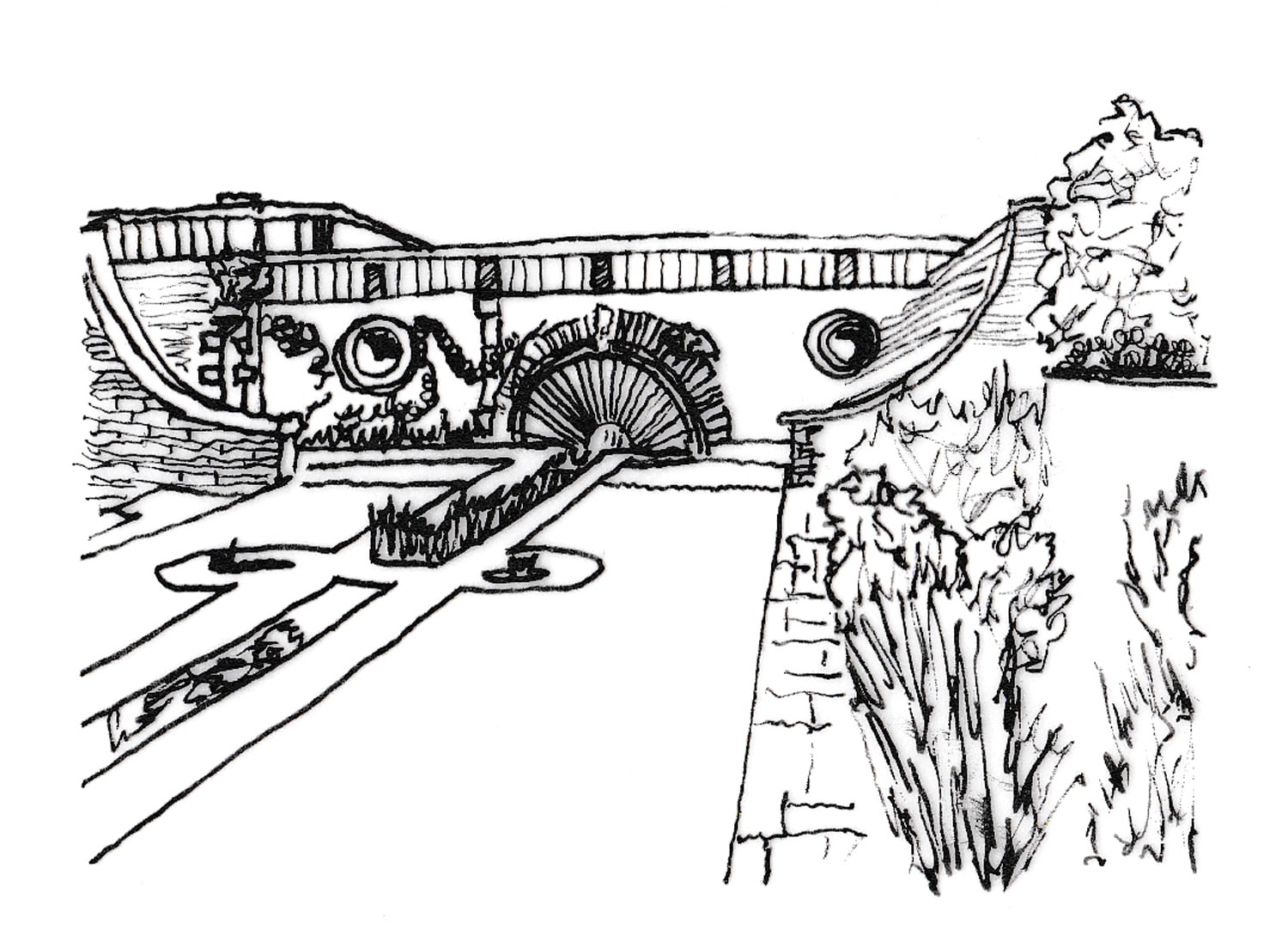
Description
Lutyens entered into a fruitful partnership with his son Robert to build Middleton Park, possibly the last great country house to be built in England. The entrance façade, severe with a blank wall and huge rusticated porch, is impressive. Eight very long sash windows and a steeply pitched roof complete this rather French Classical-façade. Four lodges with high pyramid and central chimneys are (like those at Gledstone) servants’ houses. The interior is simple, with panelled rooms and geometrically patterned black and white marble floors, all rather spare and elegant. The Delhi Order is re-used here in the entrance hall. Every bedroom had its own bathroom – making Middleton a modern house. (Amery et al, 1981, Cat no.277)Middleton Park. A large, luxurious mansion of 1935–8, of Clipsham stone, erected for the 9th Earl of Jersey, and designed by Sir Edwin Lutyens together with his son Robert Lutyens (who also acted as executant architect). It replaced a larger but undistinguished Georgian house: of 1755, remodelled with additions by Thomas Cundy, 1806–10. Lutyens’s last major country house (and his only ‘aristocrat’s seat’), it is something of an anachronism both in its Neo-Georgian style and as probably the last of its type in England, but as pure design much of it is first class. The starting point is Early Georgian but combined with the strong influence of French classicism in some forms and their treatment, notably the high-pitched roof with dormers and the long shuttered windows. Now apartments.
The severe n façade, with its windowless wall on the ground floor and massive rusticated porch with the Jersey arms, derives from the standard street front of a c17–c18 French town house, where such a wall screened the house which was set back behind a courtyard. Here the plan has been telescoped, and the projecting side wings are so short that the porch is able to link immediately to the top-lit vestibule. Above on the first floor are 3 : 5 : 3 bays, with a row of identical long sash windows (shuttered on the wings); then, above a cornice and parapet, the steeply pitched hipped roof with dormers. The rhythm is reversed on the w return, which has a blank first floor (with blind roundels) on its side wings, but windows below and in the centre. A witty detail to emphasize the doorway here is its recession between two full-height half-pilasters which die into the wall on one side and are defined only by their bases and capitals. The s front, with the main rooms, is pure Queen Anne and more routine, but ‘open’ in aspect (as against the ‘closed’ n front): again of 3 : 5 : 3 bays, the centre recessed, and all the windows with shutters; the central doorway uses Lutyens’s Delhi order (cf. below). On the e return the façade is bisected by a long garden wall from Cundy’s additions to the earlier Georgian house, with Ionic columns towards the e, screening the low kitchen wing to its n.
The kitchens are also concealed from the entrance courtyard by a continuation of the blank wall of the n façade’s ground floor. The design of the two side doorways flanking the porch is repeated for the openings in this forecourt wall, which turns n, then continues e of the house in front of the kitchen wing to link with four lodges, built to house both resident and visiting staff. These are set in echelon, two either side of the stone gatepiers (with eagles by Sir William Reid Dick) at the entrance to the forecourt. Square, with high pyramidal red-tile roofs with dormers and central chimneystacks, they are reminiscent of Voysey’s designs for cottages, c. 1900–10. The low former garage block, w of the nw lodge, is hidden by a blank wall matching that opposite. Then, on the lawn, two free-standing florid urns, probably again by Cundy. The w side of the courtyard was designed to have a wall and large gatepiers corresponding with those at the e entrance, but these were never completed.
Much of the interior survives. The principal rooms, simple and mostly panelled, are linked by the somewhat sepulchral vaulted vestibule and cross-corridor, panelled in teak, their floors inlaid with black-and-white marble in geometrical patterns. w of the vestibule is the grand staircase hall, also panelled in teak, with columns and pilasters again displaying the order that Lutyens devised for New Delhi. The secondary staircase, at the e end of the cross-corridor, is a particularly subtle design, with a playfully wriggling iron balustrade. Lord Jersey stipulated that every bedroom, including those for visitors, should have its own bathroom. The most remarkable of them, that designed for Lady Jersey, of pink onyx and white marble with a vaulted ceiling, has been sadly altered; its decoration, veering almost towards Art Deco, was, as Christopher Hussey commented, ‘a notable instance of the between-wars cult of the tub’. (Brooks & Pevsner, 2017, pp.411-2)
Bibliography
Amery, C., Richardson, M. and Stamp, G., (1981) Lutyens, the Work of the English Architect Sir Edwin Lutyens (1869-1944): Hayward Gallery London, 18 November 1981 – 31 January 1982. London: Arts Council of Great Britain.Brooks A & Pevsner N (2017) Oxfordshire: North and West. The Buildings of England. New Haven: Yale University Press.
Also Cited In
Richardson, M. (1994) Sketches by Edwin Lutyens: Drawings from the Collection of Royal Institute of British Architects (RIBA Drawings Monographs No. 1). London: Wiley.Aslet, C. (1982) The Last Country Houses. New Haven: Yale University Press.
Butler, A., 1950. The architecture of Sir Edwin Lutyens: the Lutyens memorial series. Vol 1: Country Houses, Country Life: London and Scibners: New York.
Listing Grade
I,II*,II*,II,II,IIListing Reference
1232948 1232953 1276852 1232952 1232950 1001405Client
Lord Jersey


